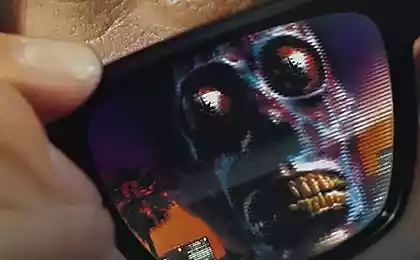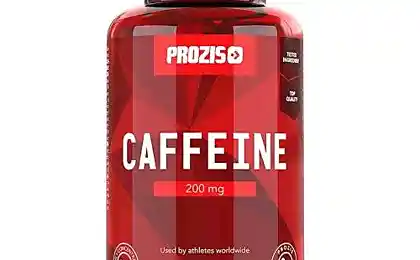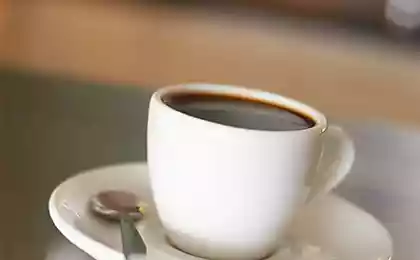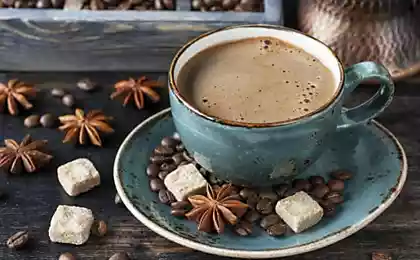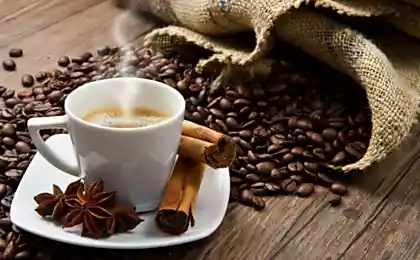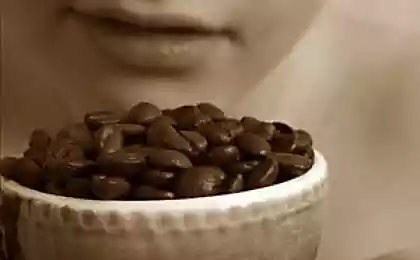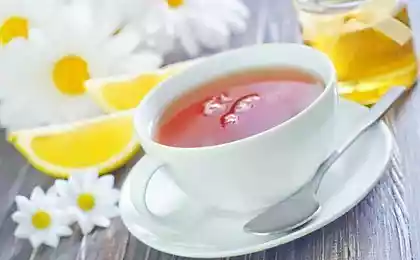953
Caffeine: how does it work allowed drug
The debate about the dangers of coffee and the caffeine have been underway for many years: charges of drug exposure are interspersed with discoveries, talking about its benefits to your body. Whatever it was, caffeine alters mood, creates a physical addiction, the rejection of it causes withdrawal symptoms, and certain part of the population develops an addiction. Looks like the withdrawal syndrome of coffee and why it is now recognized mental disorder? What are the real side effects of use of caffeine does it help athletes?

Excerpts from the book Murray carpenter "On caffeine" which was recently released in the publishing house "Mann, Ivanov and Ferber":
"On my Desk is a sealed package the size of a CD. She weighs about 100 grams. White powder in it is an alkaloid that is extracted from the leaves and seeds of plants, occurring at medium altitude in the low latitudes. The powder consists of tiny crystals, and its chemical name — a methylated xanthine. From the point of view of biology, its molecules are so useful that was independently opened on four continents. This substance can be used as an insecticide that protects the plants from pests. Now, as I write these lines, it runs through my veins. I take it almost every day for the last 25 years. And I'm not alone: the same goes for most Americans. The substance is so effective that if it was not met in nature, neurochemical would be worth to invent it.

Caffeine sharpens the mind, especially in people under stress, tired or sick; it acts on those who regularly drink coffee, those who tried it for the first time. He was the neurostimulator long before we invented this term. He has a remarkable capacity to sharpen our senses and improve mood. In the review on the psychological effects of caffeine says: "There is ample evidence that low doses of caffeine along with positive subjective effects. Study participants report that they feel energetic, imaginative, efficient, self-confident and vigorous; it is easier for them to concentrate, to work, they have a desire to interact with other people."
To obtain a lethal dose of caffeine, you'd have to immediately drink about 50 cups of coffee or 200 cups of tea. But if you decide to use the pure powder, then in a rush it's quite easy to overdose on. 9 APR 2010 Michael Bedford was at a party. He ate two spoonfuls of caffeine powder purchased through the Internet, and drank a can of energy drink. Soon his speech became slurred, began vomiting, and then developed collapse, and then Michael died.It is assumed that he used more than five grams of caffeine. Cause of death was cardiac toxicity (arrhythmias and conduction of the heart)".
What happens when we drink coffee
"Long before he appeared on the scene capsules and coffee machines, stubborn scientist from Baltimore began to understand the reasons for the popularity of such devices. Roland Griffiths has been researching the effects of drugs. On the walls of his modest office in the Medical center John Hopkins Bayview hanging multiple images: old advertising CocaCola, scene from the cartoon Too Much Coffee Man ("the Man who drank too much coffee") and a poster of Bruce Nauman* titled "Caffeine dreams". Shelf over the table, lined with many books about coffee and caffeine.
We started with the observation of nine men who consumed a lot of coffee. In double-blind experiments (this means that neither the subjects nor the researchers did not know how much caffeine is in the drink), participants were drinking it as much as they wanted, while Griffiths changed his fortress and the amount of caffeine. At first it seemed that all these men followed the same model. A few cups over short periods of time in the morning, followed by increasing intervals during the day. If the coffee was strong (more concentrated), participants reduced dose, although still drank it all day. If you increase the caffeine content without changing the fortress observed a similar effect.
Griffiths told me that he has discovered patterns of behavior coffee lovers looked very familiar: they were similar to the model observed in laboratory animal studies.
The basic concept is self-government. Connect a lab rat to the source of fun and make a cage to a lever, by which the animal will be able to get a dose of the drug. Pressing the lever is the self-appointed. Scientists count the number of times a rat presses the lever, and the intervals between doses. "Drinking coffee can also be regarded as a form of self-appointment medication, said Griffiths, that you can measure in SIPS or cups a day." As shown by the study, with intervals and amount of coffee the participants accurately controlled amount of caffeine to maintain optimal dose.
Considering coffee and keeping in mind the study of Griffiths, you in a different light you will see how hardly awakened people, stumbling, walking to the coffee pot, or heading to the break room at 10 am, or come into the cafe at lunchtime.You will see hundreds of millions of lab rats, constantly pressing the buttons of machines with Coca-Cola or pulling the levers of the capsule machines to get an extra dose of caffeine.
Later Griffiths conducted an elegant series of studies, systematically examining the interaction of humans with the drug caffeine. For many years he studied self-management, reinforcement, discrimination, tolerance, dependence, and cancellation. You will have to spend some time to understand the terminology, how these processes structure the days for regular consumers of caffeine.
Backup — trigger, which increases the likelihood of repeating the action. If you drink Pepsi and this feeling good, then you will want to drink it more often. Reinforcement — not euphoria. A large dose of caffeine has a major stimulating effect, many are perceived as euphoria, that is, a sudden feeling of enthusiasm, while the reinforcement — something more subtle, and it occurs below the level of consciousness.
Discrimination — ability to detect the substance. To test this, the researchers give a man a pill that contains either caffeine or a placebo, and find out whether it is able to detect the presence or absence of caffeine and in what quantity. What is tolerance, we all understand.It is the ability of the body less responsive to the action of a certain dose of the medicine.If we are talking about caffeine, most of us have a partial tolerance.
So if you regularly drink coffee, you get less effect from your daily Cup compared to the moment you have tried this drink for the first time. The fact that the frequent consumption of caffeine the body tries to reduce caffeine blockade and produces more adenosine to compensate for adenozinovymi effect of caffeine. Scientists call this "increasing regulation". (If abstinence takes about a week to adenosine receptors returned to baseline levels, although sometimes it takes more time.)
We now turn to dependence and withdrawal. Here the study of Griffith becomes personal. When he began his experiments, he used a lot of caffeine. "I think that 600 milligrams a day, and maybe more," he told me. It is more than seven SDK — seven Red Bull or one litre of good coffee.
He decided to explore the caffeine, Griffiths did not go in a simple way. He and six of his colleagues made a series of experiments. "Unusual studies, participated in the authors themselves," he said to me. For him, it meant a decrease in daily doses of from seven to eight KFOR to zero and observing the chaos that was happening in his body and brain. I asked Griffiths if he refused the coffee. "No, no! — he answered. — I am quite versed in psychopharmacology and know it's wrong. I gradually reduced the dose"

Syndrome
"Not being officially recognized as a drug, caffeine however, alters mood, creates a physical addiction, the rejection of it is withdrawal syndrome, and at a certain part of the population develops a dependency. Coffee consumption is stable and orderly form of drug self-administration behavior, which is easily amenable to analysis using carefully designed experiments.
Although the phenomenon of withdrawal described before, our report shows that the incidence of the syndrome of withdrawal is higher (100% researched), the daily dose at which it occurs below (with the amount of caffeine, approximately equal to the content thereof in one Cup of brewed coffee or three banks, non-alcoholic caffeinated drink), and the range of symptoms is broader than was believed until now (headache, fatigue and other dysphoric mood changes, muscle pain and stiffness, flu-like, feeling of nausea sometimes to the point of vomiting and craving for caffeine).
Now let's look at the larger picture. Assume that the delivery of caffeine in America came to an abrupt halt, and tomorrow it will not. Or that for some reason we have introduced a holiday — national day without caffeine, similar to day of quitting Smoking. Since about 80 percent of Americans are taking this stuff daily, the results suggest that 125 000 000 people will walk out with a headache, and 32 000 000 — the number equal to the population of California is experiencing a significant disorder or functional impairment.
In the DSM-5 (substantially revised compared to DSM-4), which was released in 2013 was still included the diagnosis of "caffeine withdrawal" that has put this substance on a par with other drugs — cocaine, nicotine and opiate — withdrawal syndromes, which are recognized in the DSM as a separate diagnosis. The diagnosis of caffeine withdrawal means that when you stop or decrease caffeine consumption in humans can develop a number of symptoms, such as headache, fatigue, irritability, depressed mood, nausea and muscle pain"
Insomnia and anxiety
"Sleep disturbance is a well known side effect of caffeine, but its manifestations vary greatly. Some people can drink coffee late into the evening, then lie down and sleep like babies. Others should stay just after noon, or night, they will gnash their teeth, suffering from palpitations and a non-stop stream of thoughts. And here is one more riddle of caffeine: usually it is great to relieve us from the sleepiness, but... in some cases it enhances it.
Amy Wolfson (psychology Professor at the College of the Holy cross, member of the Board of the National sleep Foundation, author of the Woman's Book of Sleep — approx. T&P) told me that she was particularly interested in the dependence of students from the caffeine and the link between use of this substance and generation of sleepy teenagers, which scientists began to carefully study. In 2006, researchers from Maryland found a link between caffeine use by Teens, their problems with sleep and fatigue in the morning.
When Wolfson colleague began to study the use of caffeine by high school students, they are faced with a similar situation. Students from the group of high caffeine intake — those who drank coffee, energy drinks and sparkling water, reported more severe daytime sleepiness and desire to boost energy by using caffeine to get through the day.
Insomnia, of course, painful, but caffeine is another and more unpleasant feature: it can cause anxiety in sensitive persons. This disease generally occurs surprisingly often. Take the statistics for any year and you will discover that the 40 000 000 American adults suffer from clinically significant anxiety, making it the most common form of mental disorders. About the connection between caffeine and anxiety were described by John gröden from the University of Michigan. He noted that, although the susceptibility of people and varies, very large dose of caffeine causes anxiety in almost anyone.
In April, Wrigley had introduced Alert energy gum with caffeine. The advertising campaign was well organized, and the product has received a lot of attention. But codeinsurance gum has a serious drawback — it is easy to confuse with the decaf option. In may 2011, more than 600 elementary school students in South Africa got sick after drinking energy gum with caffeine Blitz. They had collected at a nearby farm where she was dumped because of the expiring date.
One way or another, but that bubblegum finally spurred the FDA to action. Taylor made a statement on Monday. On Wednesday it came delegations from Wrigley and Mars. A week later, on 8 may, Wrigley said that removes the product from the market".
Coffee and sport
"Being in the Horse, I found Matthew Ganyo, instructor in physical therapy from the Department of health, productivity, and facilities the University of Arkansas, and Evan Johnson, a PhD student at Western Connecticut state University. They participated in studies of caffeine and came to Hawaii to study the effect of triathlon on the physiology of athletes.
Ganyo, fair-haired young man with a quiet voice, he was absolutely certain that caffeine gives athletes an advantage. In 2009, he and his colleagues published a systematic review of 21 works on the caffeine and increased productivity. Most of the researchers studied cyclists, but some also runners, rowers and skiers. БÓльшая part of the tests lasted from 15 minutes to two hours.
After reviewing the results, Ganyo found a consistent increase in performance when taking caffeine. He said that the improvement can be significant and reach three percent. "Of course, there is always some instability — someone effect more, someone less. Some caffeine may not be suitable, and someone even cause a slight decrease in performance.
But on average, this substance improves performance," said Ganyo. And the biggest advantage is that caffeine can be legally used in almost all sports.
So you will understand: the three percent improvement means an 18-minute reduction of time in 10-hour race. Eighteen minutes is the interval that separates the eight best professionals among men and women from the rest of the group. From Amateur athletes, the effect may be no less significant. Runner, able in the normal state to overcome 10 kilometers in 40 minutes, the caffeine can improve the result by 72 seconds. And caffeine allows the cyclist to win by a minute and a half for each hour of the competition.
"Caffeine is a unique drug because it affects almost all parts of the body, said Ganyo. — Currently, all are of the opinion that бÓльшая part of its effects is related to the effect on the brain or Central nervous system." Being an antagonist to the neurotransmitter adenosine, which tells the brain that we are tired, caffeine reduces fatigue. However, said Ganyo, it is important to take the correct dose, which is approximately three to six milligrams per kilogram of body weight. That's a lot. In the calculation of six milligrams per kilogram athlete weighing 80 kilograms would need 480 milligrams of caffeine."Four cups of strong coffee, said Ganyo. — If you can drink, you will achieve maximum productivity".
As "Cup of coffee" — a very imprecise unit of measurement, it is better to calculate like this: 480 milligrams — six Red Bull for 225 ml, 2.5 tablets "Nodosa", two energy Extra Strength 5-hour and more than six KFOR. But more than a moderate dose for an athlete with less weight, say, 65 pounds, counting three milligrams per kilogram is also not a small one is 2.5 SDK, which equals one pill "Nodosa," one energy 5-hour or 2.5 banks of Red Bull.
This amount of caffeine is difficult to obtain by using a sparkling water type of Coca-Cola. For this athlete weighing 65 kilograms would have to drink in one sitting nearly six cans. However, caffeine can effectively and in smaller doses. He clearly increased the productivity in the dose of 1.5 milligram per kilogram (the participants drink Coca-Cola) for a survey of cyclists in two-hour contests". published
Author: Natalia Health Professionals
P. S. And remember, just changing your mind — together we change the world! © econet
Source: theoryandpractice.ru/posts/10374-polnaya-istoriya-kofeina

Excerpts from the book Murray carpenter "On caffeine" which was recently released in the publishing house "Mann, Ivanov and Ferber":
"On my Desk is a sealed package the size of a CD. She weighs about 100 grams. White powder in it is an alkaloid that is extracted from the leaves and seeds of plants, occurring at medium altitude in the low latitudes. The powder consists of tiny crystals, and its chemical name — a methylated xanthine. From the point of view of biology, its molecules are so useful that was independently opened on four continents. This substance can be used as an insecticide that protects the plants from pests. Now, as I write these lines, it runs through my veins. I take it almost every day for the last 25 years. And I'm not alone: the same goes for most Americans. The substance is so effective that if it was not met in nature, neurochemical would be worth to invent it.

Caffeine sharpens the mind, especially in people under stress, tired or sick; it acts on those who regularly drink coffee, those who tried it for the first time. He was the neurostimulator long before we invented this term. He has a remarkable capacity to sharpen our senses and improve mood. In the review on the psychological effects of caffeine says: "There is ample evidence that low doses of caffeine along with positive subjective effects. Study participants report that they feel energetic, imaginative, efficient, self-confident and vigorous; it is easier for them to concentrate, to work, they have a desire to interact with other people."
To obtain a lethal dose of caffeine, you'd have to immediately drink about 50 cups of coffee or 200 cups of tea. But if you decide to use the pure powder, then in a rush it's quite easy to overdose on. 9 APR 2010 Michael Bedford was at a party. He ate two spoonfuls of caffeine powder purchased through the Internet, and drank a can of energy drink. Soon his speech became slurred, began vomiting, and then developed collapse, and then Michael died.It is assumed that he used more than five grams of caffeine. Cause of death was cardiac toxicity (arrhythmias and conduction of the heart)".
What happens when we drink coffee
"Long before he appeared on the scene capsules and coffee machines, stubborn scientist from Baltimore began to understand the reasons for the popularity of such devices. Roland Griffiths has been researching the effects of drugs. On the walls of his modest office in the Medical center John Hopkins Bayview hanging multiple images: old advertising CocaCola, scene from the cartoon Too Much Coffee Man ("the Man who drank too much coffee") and a poster of Bruce Nauman* titled "Caffeine dreams". Shelf over the table, lined with many books about coffee and caffeine.
We started with the observation of nine men who consumed a lot of coffee. In double-blind experiments (this means that neither the subjects nor the researchers did not know how much caffeine is in the drink), participants were drinking it as much as they wanted, while Griffiths changed his fortress and the amount of caffeine. At first it seemed that all these men followed the same model. A few cups over short periods of time in the morning, followed by increasing intervals during the day. If the coffee was strong (more concentrated), participants reduced dose, although still drank it all day. If you increase the caffeine content without changing the fortress observed a similar effect.
Griffiths told me that he has discovered patterns of behavior coffee lovers looked very familiar: they were similar to the model observed in laboratory animal studies.
The basic concept is self-government. Connect a lab rat to the source of fun and make a cage to a lever, by which the animal will be able to get a dose of the drug. Pressing the lever is the self-appointed. Scientists count the number of times a rat presses the lever, and the intervals between doses. "Drinking coffee can also be regarded as a form of self-appointment medication, said Griffiths, that you can measure in SIPS or cups a day." As shown by the study, with intervals and amount of coffee the participants accurately controlled amount of caffeine to maintain optimal dose.
Considering coffee and keeping in mind the study of Griffiths, you in a different light you will see how hardly awakened people, stumbling, walking to the coffee pot, or heading to the break room at 10 am, or come into the cafe at lunchtime.You will see hundreds of millions of lab rats, constantly pressing the buttons of machines with Coca-Cola or pulling the levers of the capsule machines to get an extra dose of caffeine.
Later Griffiths conducted an elegant series of studies, systematically examining the interaction of humans with the drug caffeine. For many years he studied self-management, reinforcement, discrimination, tolerance, dependence, and cancellation. You will have to spend some time to understand the terminology, how these processes structure the days for regular consumers of caffeine.
Backup — trigger, which increases the likelihood of repeating the action. If you drink Pepsi and this feeling good, then you will want to drink it more often. Reinforcement — not euphoria. A large dose of caffeine has a major stimulating effect, many are perceived as euphoria, that is, a sudden feeling of enthusiasm, while the reinforcement — something more subtle, and it occurs below the level of consciousness.
Discrimination — ability to detect the substance. To test this, the researchers give a man a pill that contains either caffeine or a placebo, and find out whether it is able to detect the presence or absence of caffeine and in what quantity. What is tolerance, we all understand.It is the ability of the body less responsive to the action of a certain dose of the medicine.If we are talking about caffeine, most of us have a partial tolerance.
So if you regularly drink coffee, you get less effect from your daily Cup compared to the moment you have tried this drink for the first time. The fact that the frequent consumption of caffeine the body tries to reduce caffeine blockade and produces more adenosine to compensate for adenozinovymi effect of caffeine. Scientists call this "increasing regulation". (If abstinence takes about a week to adenosine receptors returned to baseline levels, although sometimes it takes more time.)
We now turn to dependence and withdrawal. Here the study of Griffith becomes personal. When he began his experiments, he used a lot of caffeine. "I think that 600 milligrams a day, and maybe more," he told me. It is more than seven SDK — seven Red Bull or one litre of good coffee.
He decided to explore the caffeine, Griffiths did not go in a simple way. He and six of his colleagues made a series of experiments. "Unusual studies, participated in the authors themselves," he said to me. For him, it meant a decrease in daily doses of from seven to eight KFOR to zero and observing the chaos that was happening in his body and brain. I asked Griffiths if he refused the coffee. "No, no! — he answered. — I am quite versed in psychopharmacology and know it's wrong. I gradually reduced the dose"

Syndrome
"Not being officially recognized as a drug, caffeine however, alters mood, creates a physical addiction, the rejection of it is withdrawal syndrome, and at a certain part of the population develops a dependency. Coffee consumption is stable and orderly form of drug self-administration behavior, which is easily amenable to analysis using carefully designed experiments.
Although the phenomenon of withdrawal described before, our report shows that the incidence of the syndrome of withdrawal is higher (100% researched), the daily dose at which it occurs below (with the amount of caffeine, approximately equal to the content thereof in one Cup of brewed coffee or three banks, non-alcoholic caffeinated drink), and the range of symptoms is broader than was believed until now (headache, fatigue and other dysphoric mood changes, muscle pain and stiffness, flu-like, feeling of nausea sometimes to the point of vomiting and craving for caffeine).
Now let's look at the larger picture. Assume that the delivery of caffeine in America came to an abrupt halt, and tomorrow it will not. Or that for some reason we have introduced a holiday — national day without caffeine, similar to day of quitting Smoking. Since about 80 percent of Americans are taking this stuff daily, the results suggest that 125 000 000 people will walk out with a headache, and 32 000 000 — the number equal to the population of California is experiencing a significant disorder or functional impairment.
In the DSM-5 (substantially revised compared to DSM-4), which was released in 2013 was still included the diagnosis of "caffeine withdrawal" that has put this substance on a par with other drugs — cocaine, nicotine and opiate — withdrawal syndromes, which are recognized in the DSM as a separate diagnosis. The diagnosis of caffeine withdrawal means that when you stop or decrease caffeine consumption in humans can develop a number of symptoms, such as headache, fatigue, irritability, depressed mood, nausea and muscle pain"
Insomnia and anxiety
"Sleep disturbance is a well known side effect of caffeine, but its manifestations vary greatly. Some people can drink coffee late into the evening, then lie down and sleep like babies. Others should stay just after noon, or night, they will gnash their teeth, suffering from palpitations and a non-stop stream of thoughts. And here is one more riddle of caffeine: usually it is great to relieve us from the sleepiness, but... in some cases it enhances it.
Amy Wolfson (psychology Professor at the College of the Holy cross, member of the Board of the National sleep Foundation, author of the Woman's Book of Sleep — approx. T&P) told me that she was particularly interested in the dependence of students from the caffeine and the link between use of this substance and generation of sleepy teenagers, which scientists began to carefully study. In 2006, researchers from Maryland found a link between caffeine use by Teens, their problems with sleep and fatigue in the morning.
When Wolfson colleague began to study the use of caffeine by high school students, they are faced with a similar situation. Students from the group of high caffeine intake — those who drank coffee, energy drinks and sparkling water, reported more severe daytime sleepiness and desire to boost energy by using caffeine to get through the day.
Insomnia, of course, painful, but caffeine is another and more unpleasant feature: it can cause anxiety in sensitive persons. This disease generally occurs surprisingly often. Take the statistics for any year and you will discover that the 40 000 000 American adults suffer from clinically significant anxiety, making it the most common form of mental disorders. About the connection between caffeine and anxiety were described by John gröden from the University of Michigan. He noted that, although the susceptibility of people and varies, very large dose of caffeine causes anxiety in almost anyone.
In April, Wrigley had introduced Alert energy gum with caffeine. The advertising campaign was well organized, and the product has received a lot of attention. But codeinsurance gum has a serious drawback — it is easy to confuse with the decaf option. In may 2011, more than 600 elementary school students in South Africa got sick after drinking energy gum with caffeine Blitz. They had collected at a nearby farm where she was dumped because of the expiring date.
One way or another, but that bubblegum finally spurred the FDA to action. Taylor made a statement on Monday. On Wednesday it came delegations from Wrigley and Mars. A week later, on 8 may, Wrigley said that removes the product from the market".
Coffee and sport
"Being in the Horse, I found Matthew Ganyo, instructor in physical therapy from the Department of health, productivity, and facilities the University of Arkansas, and Evan Johnson, a PhD student at Western Connecticut state University. They participated in studies of caffeine and came to Hawaii to study the effect of triathlon on the physiology of athletes.
Ganyo, fair-haired young man with a quiet voice, he was absolutely certain that caffeine gives athletes an advantage. In 2009, he and his colleagues published a systematic review of 21 works on the caffeine and increased productivity. Most of the researchers studied cyclists, but some also runners, rowers and skiers. БÓльшая part of the tests lasted from 15 minutes to two hours.
After reviewing the results, Ganyo found a consistent increase in performance when taking caffeine. He said that the improvement can be significant and reach three percent. "Of course, there is always some instability — someone effect more, someone less. Some caffeine may not be suitable, and someone even cause a slight decrease in performance.
But on average, this substance improves performance," said Ganyo. And the biggest advantage is that caffeine can be legally used in almost all sports.
So you will understand: the three percent improvement means an 18-minute reduction of time in 10-hour race. Eighteen minutes is the interval that separates the eight best professionals among men and women from the rest of the group. From Amateur athletes, the effect may be no less significant. Runner, able in the normal state to overcome 10 kilometers in 40 minutes, the caffeine can improve the result by 72 seconds. And caffeine allows the cyclist to win by a minute and a half for each hour of the competition.
"Caffeine is a unique drug because it affects almost all parts of the body, said Ganyo. — Currently, all are of the opinion that бÓльшая part of its effects is related to the effect on the brain or Central nervous system." Being an antagonist to the neurotransmitter adenosine, which tells the brain that we are tired, caffeine reduces fatigue. However, said Ganyo, it is important to take the correct dose, which is approximately three to six milligrams per kilogram of body weight. That's a lot. In the calculation of six milligrams per kilogram athlete weighing 80 kilograms would need 480 milligrams of caffeine."Four cups of strong coffee, said Ganyo. — If you can drink, you will achieve maximum productivity".
As "Cup of coffee" — a very imprecise unit of measurement, it is better to calculate like this: 480 milligrams — six Red Bull for 225 ml, 2.5 tablets "Nodosa", two energy Extra Strength 5-hour and more than six KFOR. But more than a moderate dose for an athlete with less weight, say, 65 pounds, counting three milligrams per kilogram is also not a small one is 2.5 SDK, which equals one pill "Nodosa," one energy 5-hour or 2.5 banks of Red Bull.
This amount of caffeine is difficult to obtain by using a sparkling water type of Coca-Cola. For this athlete weighing 65 kilograms would have to drink in one sitting nearly six cans. However, caffeine can effectively and in smaller doses. He clearly increased the productivity in the dose of 1.5 milligram per kilogram (the participants drink Coca-Cola) for a survey of cyclists in two-hour contests". published
Author: Natalia Health Professionals
P. S. And remember, just changing your mind — together we change the world! © econet
Source: theoryandpractice.ru/posts/10374-polnaya-istoriya-kofeina

